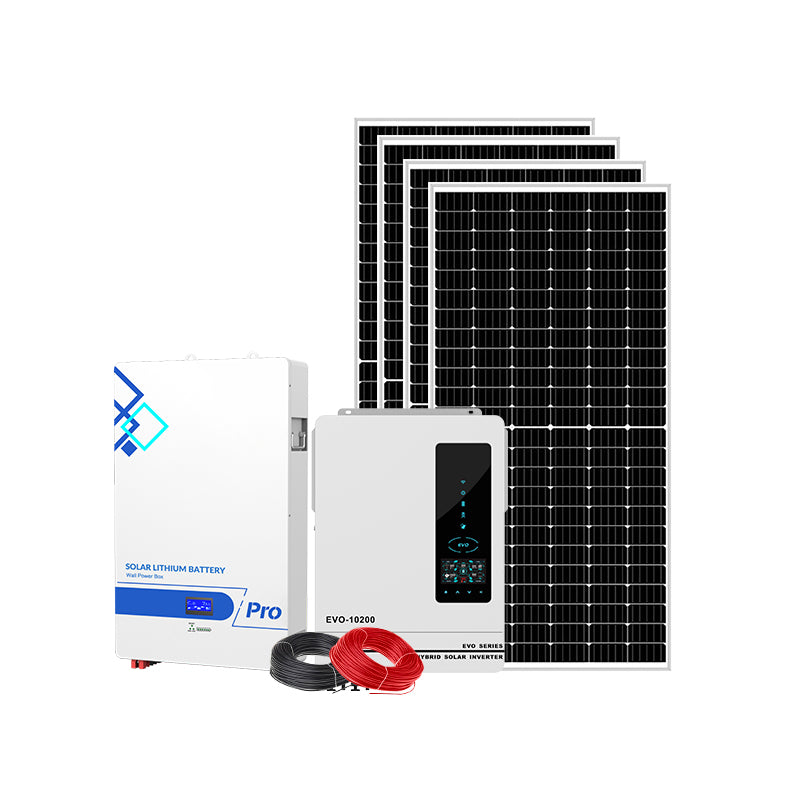Embarking on an off-grid solar journey offers the reward of energy independence, but the path is paved with potential pitfalls. A successful system requires careful planning and an understanding of how each component works together. Avoiding common mistakes during setup can save you from inefficiency, unexpected costs, and even safety hazards down the line. Here are the critical errors to sidestep when establishing your first off-grid solar system.
Mistake 1: Inaccurate Energy Planning and System Sizing
One of the most frequent and costly errors is failing to accurately assess your energy needs. An undersized system will leave you without power, while an oversized one is a waste of money. Start by conducting a detailed load analysis: list every appliance, its power rating in watts, and the estimated hours of daily use to calculate your total daily energy consumption in watt-hours.
It's not enough to just calculate your current usage. According to Off-Grid Solar Made Simple, you must also factor in system inefficiencies and energy loss, which can be around 30%, and add a safety buffer for stretches of cloudy weather. Furthermore, you should plan for future growth; your energy needs may increase, so designing a system with room for expansion is a wise long-term strategy.
Mistake 2: Improper Component Selection and Quality
An off-grid system is only as strong as its weakest link. Opting for low-quality or incompatible components is a common pitfall that can lead to premature failure and higher costs over time.
Solar Panels and Placement
While monocrystalline panels are often recommended for their high efficiency, it's also crucial to consider placement. A critical error is installing panels in an area susceptible to shading from trees or buildings, which drastically reduces output. For off-grid systems, maximizing winter power is often essential. This requires precise panel orientation, which, as noted by an analysis on grid-tied versus off-grid systems, should ideally be facing due south (in the Northern Hemisphere) at an angle equal to your latitude.
Battery Bank Blunders
Batteries are the heart of an off-grid system, yet they are a frequent source of mistakes. It's crucial to select the right type—typically deep-cycle batteries like lead-acid or lithium-ion—and size the bank correctly to provide at least one to two days of backup power. A common error highlighted by sources like a guide on 12-volt systems is mixing batteries of different types, sizes, or ages, which can ruin the entire bank. It's also a mistake to disrespect the battery's specified charge and discharge rates, as this will significantly shorten its lifespan. Be aware that storing and converting power in batteries is inherently inefficient, with potential energy losses of 30-40%.
Inverter and Charge Controller Oversights
The inverter, which converts DC power from your batteries to AC power for your appliances, must be sized to handle your peak load—the simultaneous use of multiple devices. An undersized inverter can't meet demand, while an oversized one wastes energy. Similarly, the charge controller regulates power from the panels to the battery. Using a controller that lacks necessary features or is configured improperly can lead to damaged batteries and poor system performance.
Mistake 3: Dangerous Wiring and Installation Errors
Attempting a DIY installation without sufficient electrical knowledge can be dangerous, leading to system failures, equipment damage, or fire hazards. Even if you plan the system yourself, hiring a certified electrician for the final connections is a wise approach.
Wiring and Connections
Using the wrong size wire is a critical and common error that can cause significant energy loss and poses a serious fire risk. All wiring must be correctly sized for the system's voltage and current. According to a report on solar panel fire safety, improper electrical connections and loose terminals are contributors to solar-related fires. Additionally, using cheap, low-quality lugs and connectors can result in poor connections that fail under load.
Grounding and Safety
Proper grounding is a non-negotiable safety requirement. A guide on how to ground an off-grid solar system warns against common mistakes like using undersized grounding wire, failing to bond all metal components, or not installing ground rods to the correct depth. These errors can compromise the system's ability to protect against lightning and electrical faults, endangering both your equipment and your home. Using circuit breakers and fuses not rated for DC power is another serious safety violation.
Mistake 4: Overlooking Physical and Financial Preliminaries
Ignoring Roof Condition
If you plan a rooftop installation, be sure your roof is in excellent condition. Solar panels have a lifespan of 25 years or more. According to a homeowner's guide to solar, if your roof needs replacement within the next decade, you should address that before installing panels to avoid the costly process of removing and reinstalling the system later.
Misunderstanding Financial Incentives
While the federal solar tax credit can significantly reduce costs, it's a mistake to assume all solar incentives apply to off-grid systems. For example, some state-level programs like Solar Renewable Energy Credits (SRECs), which provide cash payments, are often only available to grid-tied systems. Forgetting that some warranties may be voided by an improper DIY installation is another financial risk.
Mistake 5: Neglecting Maintenance and Redundancy
Setting up your system is just the beginning. A common mistake is to "set it and forget it." Regular maintenance, including cleaning panels, checking battery health, and ensuring all electrical connections are tight, is essential for long-term performance and safety. Finally, for true energy independence, plan for redundancy. Relying solely on solar and batteries can be risky during extended periods of bad weather. Incorporating a backup generator can provide peace of mind and ensure you always have power when you need it most.






Leave a comment
All comments are moderated before being published.
This site is protected by hCaptcha and the hCaptcha Privacy Policy and Terms of Service apply.